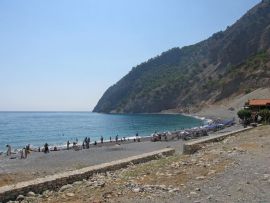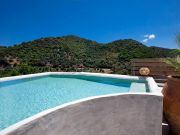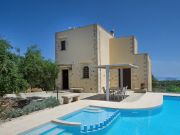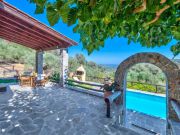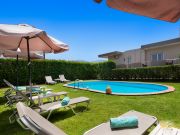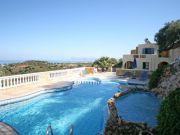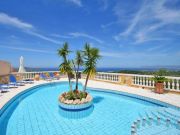 The Gorge of Samaria is situated in the National park of Samaria 43 km from the city of Chania in the White Mountains in West Crete. It is the second most popular tourist attraction in Crete (after the Minoan palace of Knossos) and by far the most popular walk. It is estimated that more than a quarter million people walk through the Gorge every year from the beginning of May to the end of October. The Samaria Gorge is an area of stunning natural beauty, passing through forests of ancient cypresses and pines.
The Gorge of Samaria is situated in the National park of Samaria 43 km from the city of Chania in the White Mountains in West Crete. It is the second most popular tourist attraction in Crete (after the Minoan palace of Knossos) and by far the most popular walk. It is estimated that more than a quarter million people walk through the Gorge every year from the beginning of May to the end of October. The Samaria Gorge is an area of stunning natural beauty, passing through forests of ancient cypresses and pines.
According to the Greek mythology, one of the Titans cut the land with his knife to create the Gorge, while Zeus placed his throne on the top of the mountain Gygilos and raced his chariot on the nearby mountain plain when he got bored with the disputes and intrigues in Olympus. The Gorge of Samaria is 16 km long (the longest Gorge in Europe), starting at an altitude of 1250 m (at Xyloskalo at the end of Omalos village) and taking you all the way down to the shores of the Libyan sea in Agia Roumeli through the narrow Sidesportes or "Iron Gates" (rocky walls that rise up to 500 metres with only 3 meters wide). Next to the entrance of the Gorge, "Xyloskalo", there is a tourist pavilion with a view of the majestic mountain of Gigolos, at the altitude of 2,083 meters.
The walk through the Gorge from "Xyloskalo" down to Agia Roumeli (17 km trek) will take you anything from 3 to 5 hours of walking time (excluding the breaks) if you are a fit walker; otherwise it can take up to 7-8 hours.
If you are lucky enough you can see or even meet the famous Kri-Kri (Capra aegagrus cretica) or some of the rarest birds of Europe; the lammergeier, the golden eagle, the Hieraaetus (Bonelli's eagle) and the griffon Vulture.
A few hundreds meters far from Xyloskalo there is the Church of Agios Nikolaos, a small stone church, hidden among huge cypress trees. It is believed that the Sanctuary and Oracle of Apollo are hidden under the Church.
Moreover, on the 7th km of the walk down to Agia Roumeli the derelict village of Samaria is located. It was abandoned in 1962 when the area was designated a National Park. Next to the village there is the Church that was dedicated to Saint Maria of Egypt and from which the Gorge and the settlement were named after.
The Samaria National Park is open from the beginning of May to the end of October from 6 a.m. to 3 p.m. every day. From 3 p.m. to the sunset visitors are allowed only to the first two kilometres of the path from both entrances (Xyloskalo and Agia Roumeli). There are public means of transport (buses-KTEL next to the famous square '1866') going to Xyloskalo during the morning.
In Agia Roumeli you can get one ferryboat returning to Hora Sfakion and then take an evening bus returning to Chania. From Agia Roumeli you can also get a ferryboat going to Sougia or Paleochora but there will be no bus returning to Chania the same day. If you are not alone and you do not like the idea of a bus you can share a taxi to Omalos; it costs about 40 Euros.
Useful Tips:
Wear strong shoes
Use a back sack to carry a bottle of water and fruits
Have some light food (sandwich) with you
Take your time to admire and 'feel' the Samaria Gorge





